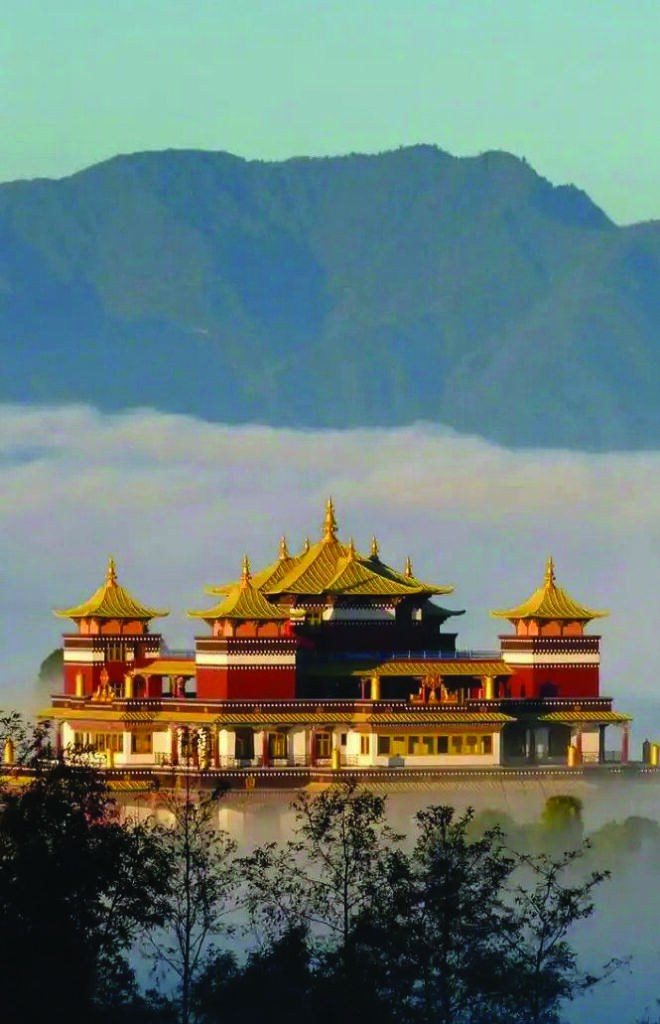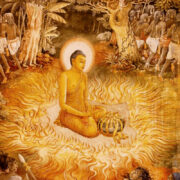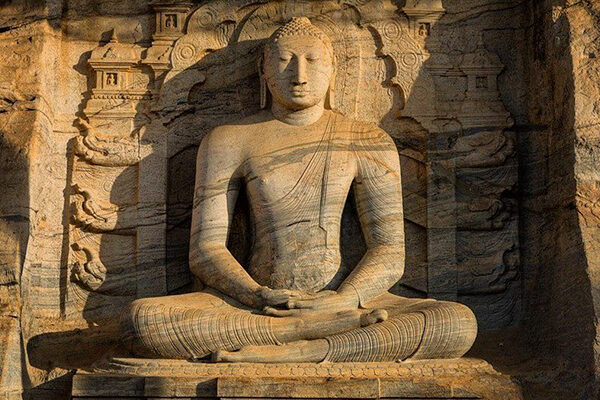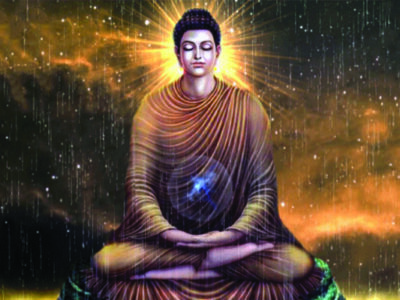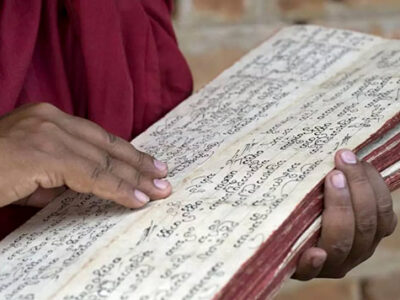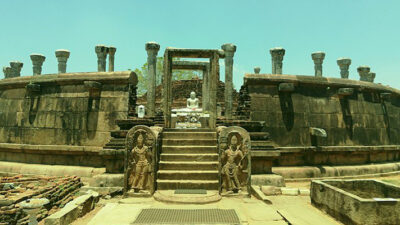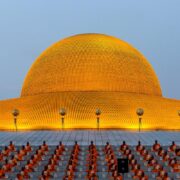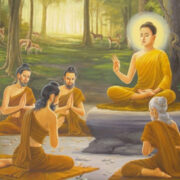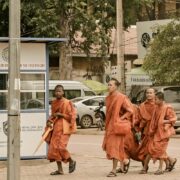Written by Rajendra Thokar
Introduction
Nepal, a small but naturally beautiful country is the birthplace of many Bodhisattvas, Buddhas, the fountain of Buddhism and peace, and lies between the two developing giant superpowers in the world, China, in the north and India, in the south. Though small geographically, this country can play a very crucial role as an interlocutor between the two superpowers. Social disintegration, disorders, violence, killings have exponentially been grown up at present time world. It is due to the high poverty, lack of proper education of peace and harmony among the common people, social groups and interactions. So, peace and harmony have been the most sought out thing around the world. For this, Nepal can be the role model and play a vital role to establish and spread peace and harmony across the globe by advocating the middle-way principle of Buddhist philosophy. As Buddhas sprouted in Nepal and Buddhism spread south to north to east of Asia, and later on, across the globe, Nepal can be the hub for Buddhism, world peace and harmony. This paper attempts to present a brief account of many Bodhisattvas, Buddhas, the spread of Buddhism through Nepal to the world, many Buddhist sites across the country that can help promote world peace and harmony. The information and data presented in this paper are based on the work experience in the field, observation, discussion, interaction, and related literature.
Keywords: Bodhisattva, Buddha, Buddhism, Buddhist sites, Harmony, Lumbini, Monastery, Nepal Shrine, Peace, Pilgrim, Pilgrimage
1. Nepal: Country of Buddhist Monastery
Nepal is the sacred and holy land and holy pilgrimage for the Buddhist adherents and world people. Lumbini, the west-southern place of Nepal is the abode of peace and the ultimate pilgrimage for every Buddhist in the world. In this sacred and holy land, Sakyamuni Guatama Buddha was born in 623 BC. This is the most sacred place for people who believe in Buddhism, peace and harmony. Buddhist adherents, pilgrims, peace seekers, peace lovers, general visitors from home and abroad visit Lumbini to pay homage to Sakyamuni Gautama Buddha. So, every Buddhist adherent has a wish to visit Lumbini, the birthplace of Sakyamuni Buddha, at least once in their life.
Nepal, a landlocked small country situated between the two giant superpowers China and India, is the holy place through the Buddhist perspective. The term Nepal is made up of three terms such as ne-paa-la. Here, the term has the special meaning and linguistic value with regard to Buddhist Philosophy. By the linguistic analysis of the term, we can get the hidden meaning of Buddhism and the Buddhist world.
The term Nepal has its own significant meaning. It is spelled as ne-paa-la or /ne-pa-la/ or /ne-pal/. The term ne refers to holy pilgrimage, paala (also bahaal/bahaala/bahila) to vihara. Here, the Sanskrit term vihara means Buddhist monastery.
So, the term Nepal refers to the country of Buddhist Monastery. Around more than 400 Vajrayana Monasteries have been found in the Kathmandu Valley of Nepal. The term ne-ya-ba-haa-la has been mentioned in Sarvasthivadi Tripitaka. Here, the term neya or ne refers to holy pilgrimage, ba-haa-la
to vihara or Buddhist monastery. Later on, it changed into Nepal as the country name. So, the country name Nepal was derived from the term ne- ba-haa-la, ne-ba-hi-la, ne-ya-ba-haa- la. The Tamang community, the most major Buddhist community in Nepal, has the special terminology to refer to the country. They call it baa-la-yu- la or baal-yul. Here, the term baa-la refers to vihara, and yul to country.
So, in the Tamang language, the term baal-yul refers to the country of the monastery or Buddhist monastery country. Araniko is very famous Nepali Architect in Tibet during 1261 CE. He is called baal-bu in Tibet. Here, the term baal refers to bahaa, Vihara or Buddhist monastery, and bu to resident or prince. So, the term baal-bu named in Tibet for Araniko is the Prince or resident from Buddhist monastery country of Nepal.
By the linguistic definition, it can be concluded that Nepal is the sacred and holy land, Buddhist pilgrimage and the country of Buddhist Monastery, wherein previous Buddhas and Sakyamuni Gautama Buddha were born and originated Buddhism and then diffused around the world.
2. Nepal: The Sacred and Holy Land of Bodhisattvas and Previous Buddhas
2.1 Swayambhu Chaitya: Adi Buddha (Previous Buddha)
Swayambhu Chaitya lies in Kathmandu, Nepal. The construction of the Swayambhu Chaitya or Stupa in Kathmandu is the symbol of Adi Buddha (previous Buddha). The Swayambhu Purana is one of the oldest texts of Buddhism, which describes the Swayambhu Chaitya as the Adi Buddha. The shortest version of the Swayambhu Purana contains 280 verses and begins like a typical Buddhavacana Sutra (Teachings of the Buddha). The tradition of this Swayambhu Purana was handed down from Buddha Sakyamuni to Maitreya, and continued as follows: Maitreya – Bhikkhu Upagupta – King Asoka – Bhikkhu Jayasri – Jinasri Raja Bodhisattva.
Shakya and Bajracharya (2001:30) quote Alexander Rospatt (1998:5) that the Swayambhu myth was developed and popularized in the wake of the raid of Nepal by Shams-ud-Din in NS 470 (1349 CE) when the situation for introducing new elements into Buddhism may have particularly favourable. They further mention that it is known that the title Swayambhu Purana does not appear in the earliest recension. The oldest title is given as Swayambhucaitya bhattarakoddesa, and later it was named Gosrnga parvata Swayambhu caitya bhattarakoddesa, etc. It was generally known as the Swayambhu utpattikatha (story of the origin of Swayambhu). Only the 2nd and4th recensions mention the word Purana viz. Vrhat svayambhu Puranaor Svayambhu Purana. According to Hubert Decleer (n.d., cited in Shakya & Bajracharya 2001:30), the shortest version is the oldest and the extended version was created later, with some modifications and inclusions. The title Purana or Mahapurana might have been introduced later to compete with the increased Hindu dominance of the 15th and 16th centuries. However, Shakya and Bajracharya opine that the shortest version (280 verses) can be regarded as the original version of Swayambhu Purana.
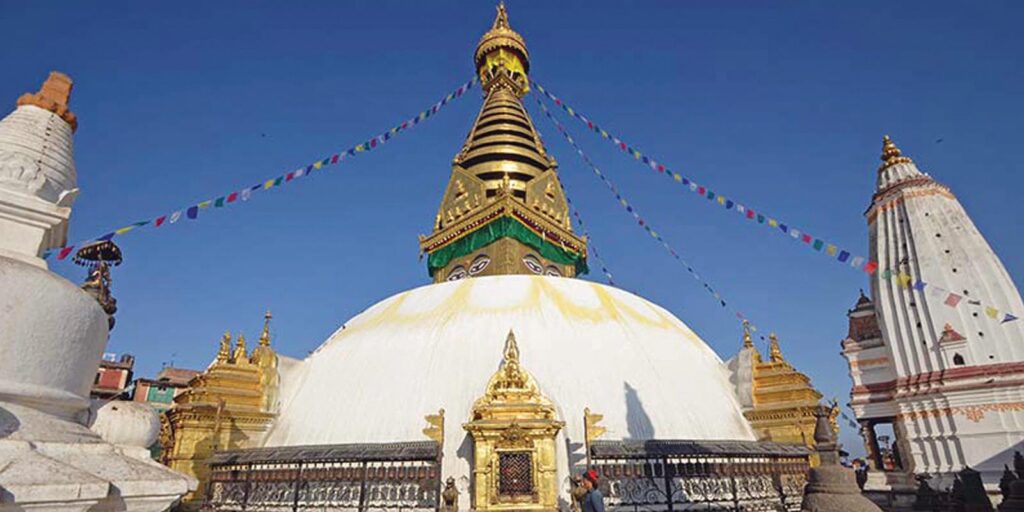
Shakya and Bajracharya (2001:35) state in the footnote that in this text there is no mention of the planting of the lotus seed by Vipashvi. It says only that at the time of the Tathagata Shikhi, a lotus with Swayambhu in its midst arose from the lake, as described in Chapter 2. Alexander Rospatt suggests that Vipashvi’s proper name should be Vipashyin. As mentioned in the text of Swayambhu Purana, here is described a brief account of the Bodhisattvas, Buddhas and Buddhist pilgrimages. In query of when the Nepal valley became a habitable land asked by Bodhisattva Maitreya, Sakyamuni Buddha said, “In the age when people had a lifespan of 60,000 years, the Buddha Vishvabhu, teachers of gods and men, appeared in this world. He was staying at Upakantha vihara in the city of Anupama. At that time, I was one of his disciples called Parvatakhya Bodhisattva, working for the benefit of sentient beings.” Bodhisattva Maitreya asks Buddha Vishvabhu about how the Nepal valley was made habitable for humans. The Buddha said that this happened in the age when people had a lifespan of 40,000. At that time, Lord Krakucchanda Tathagata, the teacher of gods and men, appeared in this world and came to the Nepal valley with his followers, paying a visit to Swayambhu, the self-born one.

In the text, Lord Sakyamuni Buddha has narrated about the origin of Swayambhu Chaitya (Symbol of Previous Buddha), and many Buddhas, Bodhisattvas, Buddhist Monks, Buddhist Kings and Buddhist adherents who visited the Swayambhu Chaitya to pay homage.


